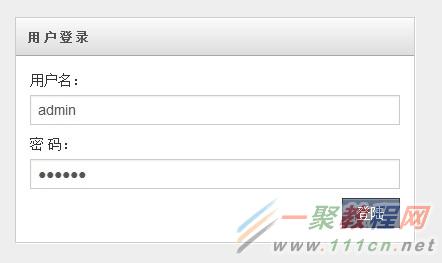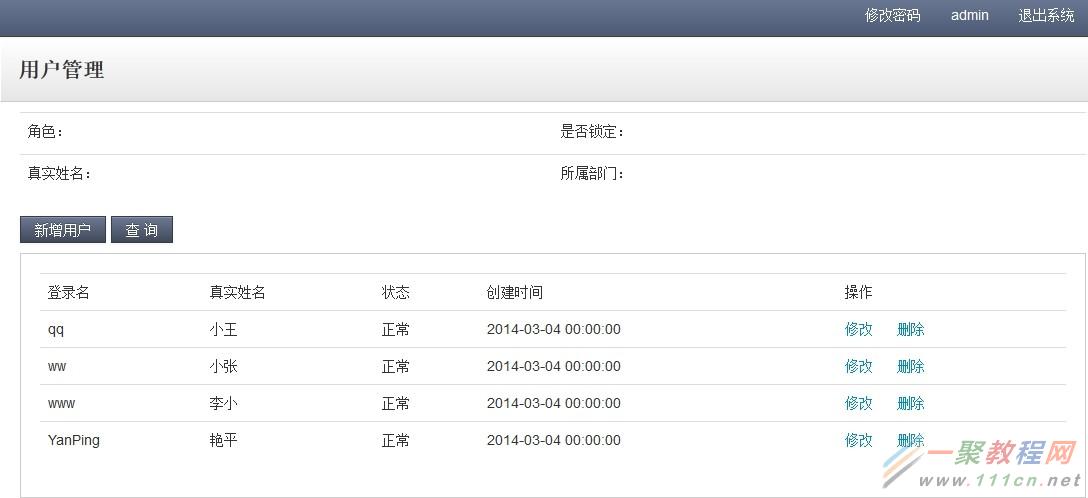最新下载
热门教程
- 1
- 2
- 3
- 4
- 5
- 6
- 7
- 8
- 9
- 10
Spring如何实现数据库读写分离的教程
时间:2022-06-29 07:49:25 编辑:袖梨 来源:一聚教程网
现在大型的电子商务系统,在数据库层面大都采用读写分离技术,就是一个Master数据库,多个Slave数据库。Master库负责数据更新和实时数据查询,Slave库当然负责非实时数据查询。因为在实际的应用中,数据库都是读多写少(读取数据的频率高,更新数据的频率相对较少),而读取数据通常耗时比较长,占用数据库服务器的CPU较多,从而影响用户体验。我们通常的做法就是把查询从主库中抽取出来,采用多个从库,使用负载均衡,减轻每个从库的查询压力。
采用读写分离技术的目标:有效减轻Master库的压力,又可以把用户查询数据的请求分发到不同的Slave库,从而保证系统的健壮性。我们看下采用读写分离的背景。
随着网站的业务不断扩展,数据不断增加,用户越来越多,数据库的压力也就越来越大,采用传统的方式,比如:数据库或者SQL的优化基本已达不到要求,这个时候可以采用读写分离的策 略来改变现状。
具体到开发中,如何方便的实现读写分离呢?目前常用的有两种方式:
1 第一种方式是我们最常用的方式,就是定义2个数据库连接,一个是MasterDataSource,另一个是SlaveDataSource。更新数据时我们读取MasterDataSource,查询数据时我们读取SlaveDataSource。这种方式很简单,我就不赘述了。
2 第二种方式动态数据源切换,就是在程序运行时,把数据源动态织入到程序中,从而选择读取主库还是从库。主要使用的技术是:annotation,Spring AOP ,反射。下面会详细的介绍实现方式。
在介绍实现方式之前,我们先准备一些必要的知识,spring 的AbstractRoutingDataSource 类
AbstractRoutingDataSource这个类 是spring2.0以后增加的,我们先来看下AbstractRoutingDataSource的定义:
public abstract class AbstractRoutingDataSource extends AbstractDataSource implements InitializingBean {}
AbstractRoutingDataSource继承了AbstractDataSource ,而AbstractDataSource 又是DataSource 的子类。DataSource 是javax.sql 的数据源接口,定义如下:
|
publicinterfaceDataSourceextendsCommonDataSource,Wrapper {
/**
*
Attempts to establish a connection with the data source that * this
DataSource object represents. *
* @return a connection to the data source
* @exception SQLException if a database access error occurs
*/
Connection getConnection()throwsSQLException;
/**
*
Attempts to establish a connection with the data source that * this
DataSource object represents. *
* @param username the database user on whose behalf the connection is
* being made
* @param password the user's password
* @return a connection to the data source
* @exception SQLException if a database access error occurs
* @since 1.4
*/
Connection getConnection(String username, String password)
throwsSQLException;
}
|
DataSource 接口定义了2个方法,都是获取数据库连接。我们在看下AbstractRoutingDataSource 如何实现了DataSource接口:
|
publicConnection getConnection()throwsSQLException {
returndetermineTargetDataSource().getConnection();
}
publicConnection getConnection(String username, String password)throwsSQLException {
returndetermineTargetDataSource().getConnection(username, password);
}
|
很显然就是调用自己的determineTargetDataSource() 方法获取到connection。determineTargetDataSource方法定义如下:
|
protectedDataSource determineTargetDataSource() {
Assert.notNull(this.resolvedDataSources,"DataSource router not initialized");
Object lookupKey = determineCurrentLookupKey();
DataSource dataSource =this.resolvedDataSources.get(lookupKey);
if(dataSource ==null&& (this.lenientFallback || lookupKey ==null)) {
dataSource =this.resolvedDefaultDataSource;
}
if(dataSource ==null) {
thrownewIllegalStateException("Cannot determine target DataSource for lookup key ["+ lookupKey +"]");
}
returndataSource;
}
|
我们最关心的还是下面2句话:
|
Object lookupKey = determineCurrentLookupKey();
DataSource dataSource =this.resolvedDataSources.get(lookupKey);
|
determineCurrentLookupKey方法返回lookupKey,resolvedDataSources方法就是根据lookupKey从Map中获得数据源。resolvedDataSources 和determineCurrentLookupKey定义如下:
|
privateMap
protectedabstractObject determineCurrentLookupKey()
|
看到以上定义,我们是不是有点思路了,resolvedDataSources是Map类型,我们可以把MasterDataSource和SlaveDataSource存到Map中,如下:
| key | value |
| master | MasterDataSource |
| slave | SlaveDataSource |
我们在写一个类DynamicDataSource 继承AbstractRoutingDataSource,实现其determineCurrentLookupKey() 方法,该方法返回Map的key,master或slave。
好了,说了这么多,有点烦了,下面我们看下怎么实现。
上面已经提到了我们要使用的技术,我们先看下annotation的定义:
|
@Retention(RetentionPolicy.RUNTIME)
@Target(ElementType.METHOD)
public@interfaceDataSource {
String value();
}
|
我们还需要实现spring的抽象类AbstractRoutingDataSource,就是实现determineCurrentLookupKey方法:
|
publicclassDynamicDataSourceextendsAbstractRoutingDataSource {
@Override
protectedObject determineCurrentLookupKey() {
// TODO Auto-generated method stub
returnDynamicDataSourceHolder.getDataSouce();
}
}
publicclassDynamicDataSourceHolder {
publicstaticfinalThreadLocal
publicstaticvoidputDataSource(String name) {
holder.set(name);
}
publicstaticString getDataSouce() {
returnholder.get();
}
}
|
从DynamicDataSource 的定义看出,他返回的是DynamicDataSourceHolder.getDataSouce()值,我们需要在程序运行时调用DynamicDataSourceHolder.putDataSource()方法,对其赋值。下面是我们实现的核心部分,也就是AOP部分,DataSourceAspect定义如下:
|
publicclassDataSourceAspect {
publicvoidbefore(JoinPoint point)
{
Object target = point.getTarget();
String method = point.getSignature().getName();
Class[] classz = target.getClass().getInterfaces();
Class[] parameterTypes = ((MethodSignature) point.getSignature())
.getMethod().getParameterTypes();
try{
Method m = classz[0].getMethod(method, parameterTypes);
if(m !=null&& m.isAnnotationPresent(DataSource.class)) {
DataSource data = m
.getAnnotation(DataSource.class);
DynamicDataSourceHolder.putDataSource(data.value());
System.out.println(data.value());
}
}catch(Exception e) {
// TODO: handle exception
}
}
}
|
为了方便测试,我定义了2个数据库,shop模拟Master库,test模拟Slave库,shop和test的表结构一致,但数据不同,数据库配置如下:
|
class="org.springframework.jdbc.datasource.DriverManagerDataSource">
class="org.springframework.jdbc.datasource.DriverManagerDataSource">
class="org.springframework.jdbc.datasource.DataSourceTransactionManager">
|
在spring的配置中增加aop配置
|
|
下面是MyBatis的UserMapper的定义,为了方便测试,登录读取的是Master库,用户列表读取Slave库:
|
publicinterfaceUserMapper {
@DataSource("master")
publicvoidadd(User user);
@DataSource("master")
publicvoidupdate(User user);
@DataSource("master")
publicvoiddelete(intid);
@DataSource("slave")
publicUser loadbyid(intid);
@DataSource("master")
publicUser loadbyname(String name);
@DataSource("slave")
publicList
}
|
好了,运行我们的Eclipse看看效果,输入用户名admin 登录看看效果
相关文章
- 最好用的韩漫app有哪些-免费高清韩漫阅读app下载推荐 12-27
- 微信文件传输助手网页版入口-官方网页版入口地址 12-27
- 小肥羊漫画手机版下载安装免费 - 小肥羊漫画手机版下载最新版本 12-27
- SKR到底啥意思?SKR这个梗怎么火起来的 12-27
- 百度搜题网页版入口在哪找-百度网页版搜题入口直达 12-27
- beautybox最新版本下载-beautybox安卓安装包下载 12-27
















